To get to the Whitney’s 8th floor exhibit Laura Poitras: Astro Noise, I stood in line for about twenty minutes, taking note in the museum’s glass exterior of my reflection and those of other visitors waiting in line to see the artist’s first solo museum exhibition. I thought about Poitras’s past documentaries, including the Oscar-winning CITIZENFOUR, and wondered how her exhibition would reflect on her chief topic – the United States in the post-9/11 era – in ways that her documentaries could not. Watching my reflection slowly inch forward proved to be a fortuitous entrance to the immersive exhibit, which, according to the program, “asks viewers to actively consider their position and responsibility in the ‘war on terror.’” Indeed, Astro Noise implicates and arranges viewers in “immersive media environments” that compel active looking and embodied contemplation.
I stepped out of the elevators and into the first “immersive media environment” (the program’s reinvention of the word “room”). The space is split in half by a single screen, onto both sides of which are projected videos that respond to 9/11. Titled O’Say Can You See (2001/2016), this two-channel digital video bifurcates the room, a setup that divides viewers into opposing groups that face each other as they face the central screen, as if an audience reflected in a mirror. Playing on side A of the screen are slowed images of the faces of New Yorkers as they look upon the remains of Ground Zero days after the attacks. Here viewers confront, and perhaps even remember firsthand, the emotions of that terrorist event: disbelief, shock, fear. These same feeling could be registered on the faces of viewers looking at the other side of the screen, where uncovered U.S. military interrogation videos of two prisoners in Afghanistan, Said Boujaadia and Salim Hamdam, represent the Bush Administration’s response to the attacks.

By opening Astro Noise with the tragic events at the Twin Towers, Poitras argues for the dual narratives that have allowed for the amorphous “war on terror”: one side is marked by an unimpeachable public mourning and solidarity; the other characterized by the U.S. government’s conspicuous and covert antagonism. Both positions require complicity on the part of the general public, a fact that is made apparent by the room’s double-sided screen and mirroring effect. The space is arranged in such a way that looking at the figures projected onto the central screen means looking at, or at least looking in the direction of, the figures comprising the opposing side of the audience. Viewers are therefore encouraged to not only watch “their” side of the screen, but also to watch those audience members directly opposite them, meaning that viewers in the act of looking are themselves on display. This reciprocal looking invokes the duplicity of surveillance: watching and being watched. I, along with each member of the audience, became both voyeur and exhibitionist, both a visitor to the exhibit and a component of it.
Poitras further implicates museum visitors in the next space by inviting them to bed, or at least to Bed Down Location (2016), a mixed-media installation comprised of a massive bed and a ceiling video projection of the night skies over Yemen, Somalia, Pakistan, and Creech Air Force Base in Nevada. While the first three locations represent areas where the U.S. military regularly drops bombs using drones (or, to use the Pentagon’s subdued parlance, conducts targeted killings using unmanned aerial vehicles), the latter location is where such targeted killings are tested and perfected. By including the Nevada sky-scape, a place that is clearly not like the others, Poitras presumably intends for visitors to this elite American institution to contemplate their privileged position in the United States, where skies remain inviolate from drone violence. Having just been reminded of the aerial trauma of 9/11 in the previous room, a tragedy that took place less than a mile from the Whitney’s current site, viewers are also presumably meant to lie back and empathize with those people currently fearful of the destruction wrought from their skies.

By inviting viewers to recline on a bed and gaze upward at the ceiling rather than forward at a wall or hanging screen, Poitras shifts viewers’ bodies from an upright, vertical orientation to a reclined, horizontal orientation. Paradoxically, it is because of this leisurely position that the labor of looking is exhibited and enacted anew. Viewers are both engaged by this fresh viewpoint (how often do New Yorkers get to gaze up at a night sky full of stars?) and made vulnerable by this relaxed position (how often does one lie down in public?). Indeed, the phrase “bed down location” is the military’s term for the location of a targeted person, and, as the re-orienting space of Bed Down Location makes overt, the nature of such a location depends upon one’s point of view: from the hovering lens of a drone, the target is exposed as if splayed on a bed; from the vulnerable eyes of an “enemy combatant” looking upward, the undetectable drone is nearly omnipotent. Poitras successfully repositions viewers in order to simulate what it feels like to be surveilled by a hidden presence from above, an operation that gains traction later in the exhibit.
Turning to Disposition Matrix (2016), housed in the next room, looking continues to be laborious and conspicuous despite the reorientation to a typical horizontal viewpoint. As the title suggests, the space and content of Disposition Matrix compel participation from viewers. The walls of the dark, L-shaped space contain slits positioned at various heights, inside of which are videos and recovered government documents concerning the national security apparatus. One particularly aloof memo bearing the header “clandestine collection vs. covert action” distinguishes between two terms that the public generally regards as interchangeable. This document’s linguistic gymnastics are representative of the perplexing verbiage in the other materials on display, which because of their narrow housing, require some gymnastics on the part of viewers in order to be seen. For example, in order to look into all the slits I had to crouch down, stand en point, squint, and turn my head, all in order to see files and videos that are normally concealed from public view. The message of Disposition Matrix is clear, if heavy-handed: the U.S. government has bent over backwards to justify the so-called “war on terror,” all the while masking the questionability of their actions behind legal and linguistic maneuvers.
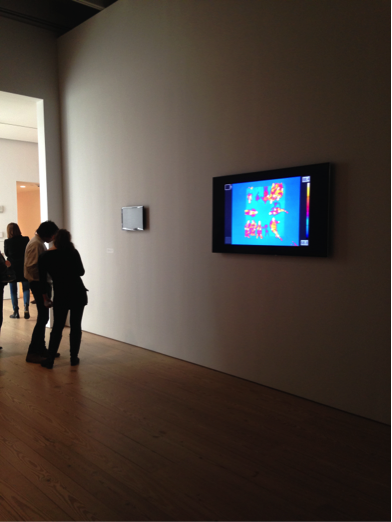
Moving into the final room, I was taken aback by its relative brightness, and had to let my eyes adjust from the darkness of the previous areas. This concluding room awkwardly merges two semi-distinct spaces: a niche that houses the documents and documentary video comprising November 20, 2004 (2016); and the final wall of the exhibit, which contains two television monitors that play Last Seen (2016) and an annexed video accompanying Bed Down Location. Out of the niche pours Poitras’s droll voice – a sound that envelops viewers in the small space – recounting the time when she was placed on a government watch list. Turning to the last wall of Astro Noise, on one monitor is a live thermal video from a hidden ceiling camera of unassuming viewers reclined in Bed Down Location. This footage is uncannily similar to the real-time footage of drone operators, and I felt slightly powerful and slightly sinister, before realizing that I, too, had been recorded in Bed Down Location. On the monitor for Last Seen is a live stream of the Wi-Fi signals from viewers’ personal devices. Looking at the endless stream of private data made public, I felt betrayed by my cellphone, followed by anxiety about all the moments in my daily life in which I am unknowingly tracked.
Together, the artist’s voice and the two monitors, as well as the disjointed space(s) in which they reside, become the pivotal gotcha! moment of Astro Noise. By revealing her sly surveillance of viewers taking place throughout the exhibit, Poitras makes the political become personal. The inflammatory content of the entire exhibit – in the form of documents and videos that disparage the “war on terror” and its attendant political and ethical grievances, not to mention its ever-growing number of casualties – is made more damning and unavoidable by this final implicating context. As in O’Say Can You See, in this concluding room Poitras exhibits viewers in order to put on display their past and present involvement in the “war on terror.” She therefore successfully prompts lasting self-reflection. In this way, Poitras treats the public’s complicity in the “war on terror” as an artistic problem, as something to produce, something to work through. Unlike the artist’s past documentaries, in which highly charged content is shown on – and therefore separated from viewers by – a screen, Astro Noise actively and theatrically engages viewers in encompassing spaces. This immersion makes evident the fact that when it comes to the “war on terror,” we, the American public, have always been right in the thick of things.
Laura Poitras: Astro Noise runs until May 1 at the Whitney Museum of American Art, 99 Gansevoort Street, Manhattan.

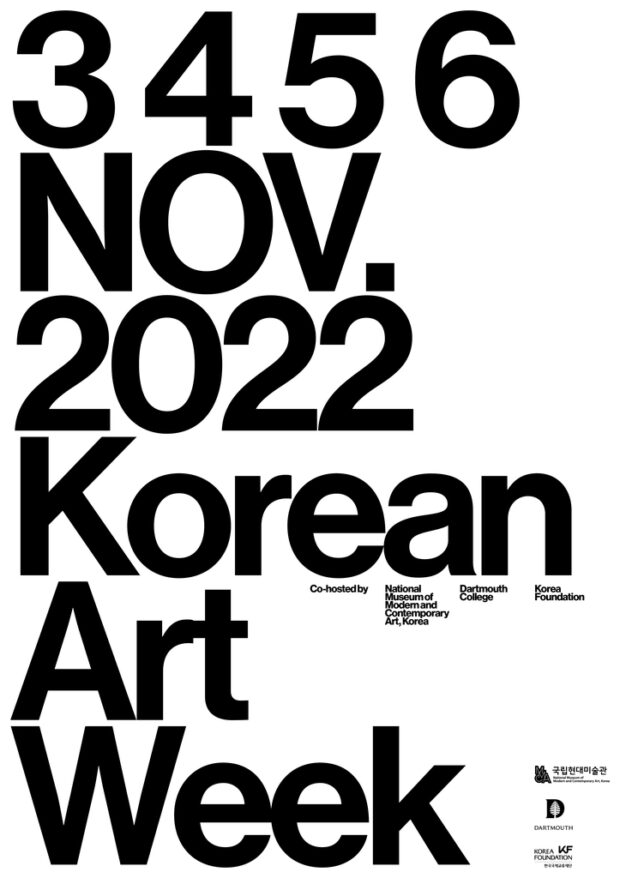

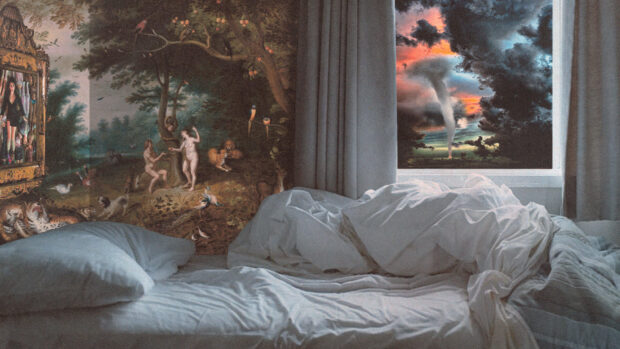
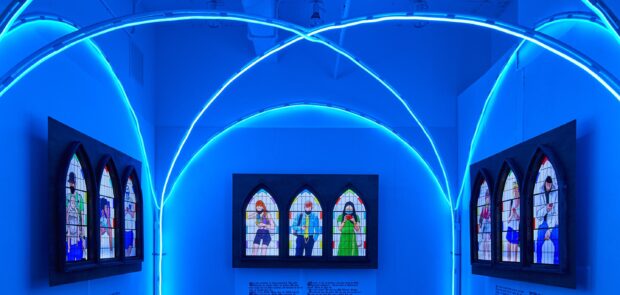
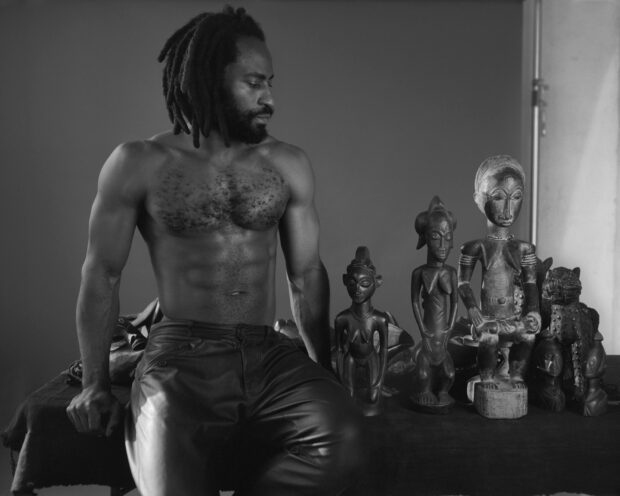
Be First to Comment